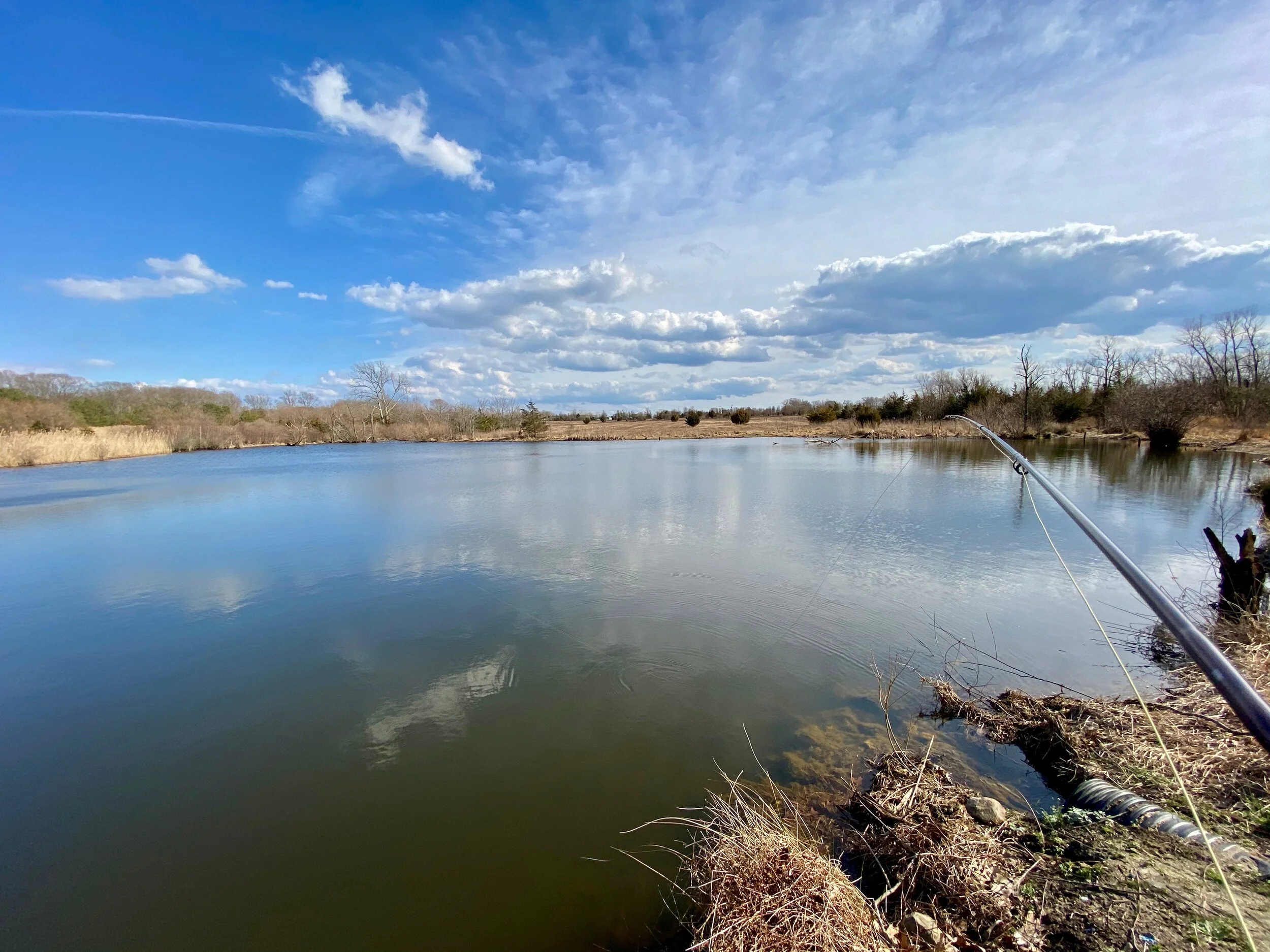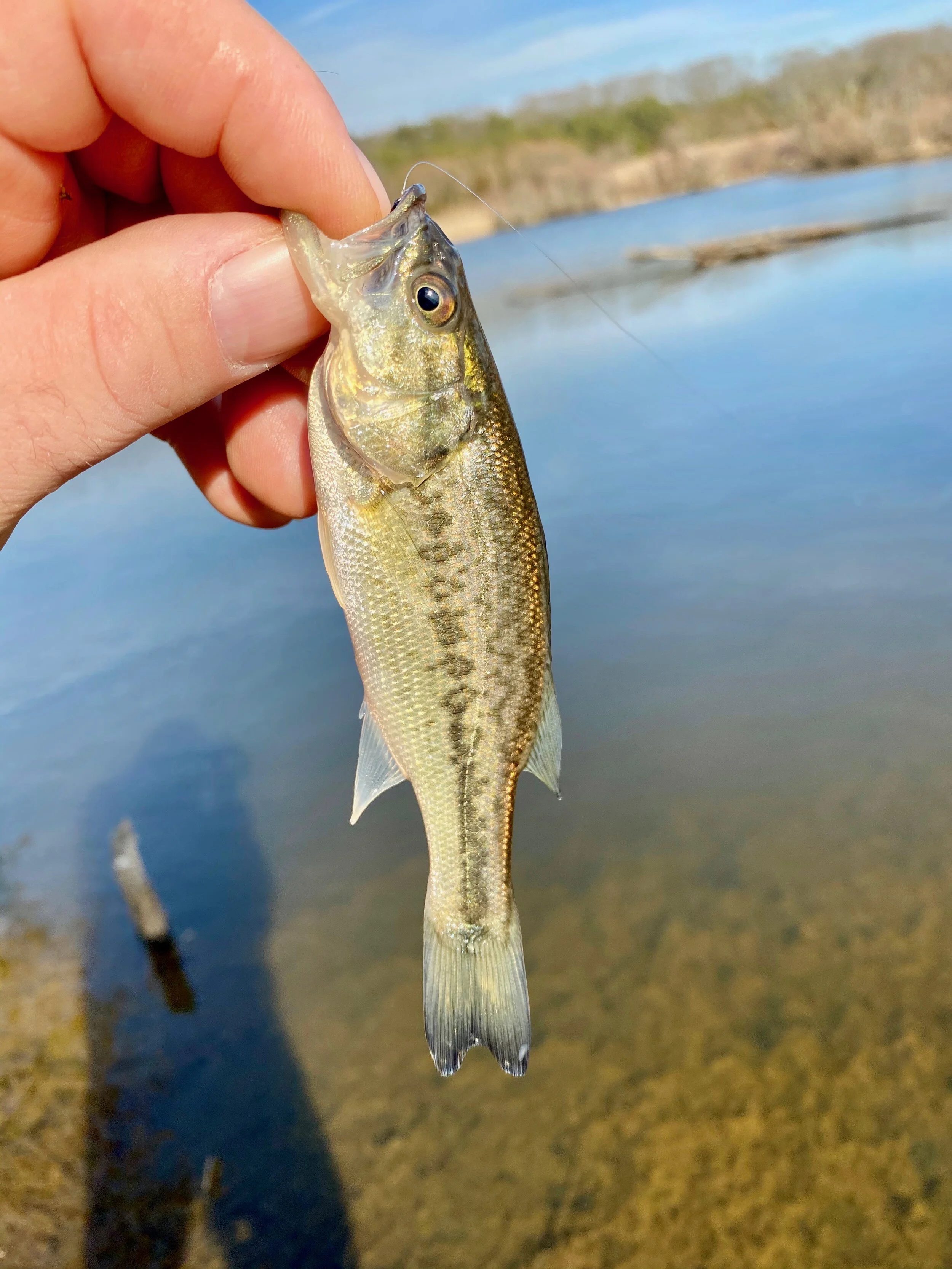A common question I am often asked this time of year is how to reliably catch bluegills before the water warms up and the fish begin their spawning rituals. Many fly fishers chuckle about the notion of panfish being hard to catch on a fly. These anglers likely only fish for bluegills and other sunfish during the ideal conditions that present themselves during late spring and summer. Trying to catch panfish on the fly just after ice can be a bit of a challenge.
Cold water panfish can be caught if you can find them!
To Catch Them You Have To Find Them First!
For the shore-based angler finding early season bluegills can be frustrating. They don’t occupy the same water you are likely to find them in during the warmer months of the year. In cold weather, panfish tend to school up often by year class. When fishing from a boat early in the year, I can usually locate these schools of fish quickly with the use of a fish finder. Shore-based anglers don’t have that option, so how can they find the fish?
Finding the right water is key to early season success! Look for small shallow bodies of water that will warm quickly.
The first thing to consider is choosing the right body of water. Just after ice-out, I focus on smaller bodies of water that will warm up quickly. During the coldest conditions, panfish will be schooled up in deeper water. I look for small ponds that have deep water that can be accessed from the shore, such as a dam face. After a few calm sunny days, you may find fish moving into dark bottomed shallow flats. They seem to move into shallow water to warm up. They can be extremely skittish and will retreat to deeper water as soon as the sun disappears. You may actually see some surface activity on calm sunny days when the fish will actively feed on emerging midges.
Early Season Techniques
For fish schooled in deep water, I will use an intermediate, sink tip, or full sinking line. I will probe the depths with small nymphs and wet flies until I locate the fish. To entice these sluggish fish, your presentation must be painfully S…L…O…W… in cold water; the fish will not chase down a fly. A slow hand twist retrieve is a better option than stripping in the fly. Detecting strikes can be tough due to the use of sinking lines and the subtle takes of the fish. The fish often swims slowly up the fly and inhales it. They will be no jerk or tug on the line. If you feel anything before the fish spits out the fly, it will be just subtle heaviness on the line. Most strikes are detected by watching the leader or end of the fly line like a hawk. Anything that looks like a twitch, pause, or change in angle should be met with a hook set. It also helps to keep the rod tip low to eliminate any slack in the line. I will often fish a tandem rig with a heavy large, heavy nymph to get down quickly trailed by a smaller wet fly.
A two fly rig with a large, heavy nymph to help get a smaller wet fly down to the fish.
Once you locate the fish, you can continue to fish the sinking line or, if they are not holding too deep, switch over to a floating line and suspend your flies under an indicator. You may find that detecting strikes will be easier, and you will be able to keep your flies in “the zone” for more extended periods. I prefer to fish small nymphs and midge larva when using an indicator. I will weight the flies to get them to sink quickly.
When fish are in the shallows, it is time to switch over to a floating line. I will often find these early season fish in just a few inches of water. Under these conditions, they are very spooky and will bolt if you cast a fly line over them. This is one of the few times that I will fish a long, light leader. Wet flies are my preferred patterns for this type of fishing. I will often trail a midge larva behind the wet fly and take fish on them. If you see fish actively rising or bulging right below the surface, they are likely feeding on midges. You can try a midge dry fly alone or fish a dry/dropper trailing a midge larva or pupa pattern behind the floating fly. Again long, light leaders may be needed to keep from spooking the fish. Early in the season, a cold, cloudy day will send these shallow water fish back to the depths than you will have to repeat the process to find them again.
Effective Fly Patterns
Wet flies are sure bet for early season panfish, This bright, resin bodied soft hackle is a great choice for fish holding in deeper water.
Wet flies are my number one choice for cold water panfish. They can be tied in a variety off sizes and colors and can be fished very slowly. Weighted nymphs also are a solid choice this time of year. A large, heavy nymph can be fished with a small wet fly as a trailer to help get the smaller pattern down to the fish. Don’t be surprised if a chunky largemouth bass grabs this large nymph. I catch quite a few bass while searching for early season panfish. Smaller weighted nymphs are also a good option for suspending beneath an indicator. Midge patterns are often a solid bet for early season panfish. Larva, pupa and dries all have their place in an early season panfish box.
Large nymphs will often attract the attention of larger predators like largemouth bass, though they are usually a little bigger than this!
Fortunately, these harsh conditions don’t last too long. Winter will eventually lose its grip on the land. As the days get longer and begin to warm, the bluegills and other panfish will spend more and more time in the shallows until they start scoping out spawning territory. By this time, they have usually given up their shyness and once again become the pushovers most anglers know them to be!





